Resources
 Part of the Oxford Instruments Group
Part of the Oxford Instruments Group
Expand
Collapse
 Part of the Oxford Instruments Group
Part of the Oxford Instruments Group
In Vivo imaging refers to a variety of techniques used to visualize and study biological processes in whole, living organisms. It can be used to observe anatomical structures, molecular/cellular activities, and metabolic functions as they occur more naturally within whole organisms. Real-time monitoring can provide insights into dynamic events, such as tumour development.
Oxford Instruments Andor offers a portfolio of Scientific Cameras, to help our OEM partners develop and manufacture in vivo imaging instruments with optical imaging modalities, spanning NIR-I (visible) and NIR-II (SWIR) wavelength domains, and with solutions for both high-end and mid-range instrumentation.
Optical in vivo imaging normally involves two distinct imaging modalities, luminescence and fluorescence, usage of which is guided by factors such as depth of tissue penetration, resolution and multiplexing requirements.
Both optical imaging modalities can have specific demands on imaging hardware capabilities. These requirements can readily be addressed through selection of the appropriate camera solution from Andor’s in-vivo portfolio. Furthermore, there are also options to cover both modalities in the same instrument with a single camera.
In vivo luminescence imaging is a non-invasive technique that is typically based on bioluminescence, used for real-time monitoring of cellular & molecular processes and tumour progression within living organisms, with benefits such as low background, high-sensitivity imaging of signal that is deep within tissues, suited also to long term monitoring.
Imaging Setup
As luminescence signal is typically very low light, it is essential that a light-tight enclosure is used, as stray light would otherwise impact signal to background ratio. Imaging set-ups vary from a sealed enclosure with a camera mounted with macro lens, to microscope based. Overall optical complexity is reduced compared to fluorescence e.g. illumination and excitation/emission filter sets are not required.
Flash luminescence involves a more intense light generation, emitted over seconds, requiring similar cameras exposure durations. Glow luminescence involves a steady low intensity emission over many minutes to even hours, with overall detector exposures (or combinations of exposures) spanning such time durations.
Cameras used for bioluminescence imaging must be optimised and offer capabilities for long exposure durations with high sensitivity to extremely low light signal. The critical specifications are low dark current – which needs to be minimized by deep sensor cooling – low amplifier glow and dark current uniformity, as well as extensive pixel binning capabilities.
In vivo fluorescence imaging utilizes fluorescent probes or ligands, which emit light upon excitation by an external light source. It is typically used for high-resolution imaging of specific structures, used when it is required to visualize specific tissues, proteins, or drug distribution with spatial detail. It is also used for multiplexed imaging of multiple targets simultaneously by using different fluorophores.
Imaging Setup
The fluorescence approach requires an illumination source (LED or Laser), excitation and emission filter sets. Signal for each image is typically acquired with shorter detector exposures that is used for luminescence imaging, in the range from tens of milliseconds to seconds. As well as low noise capability, the camera often needs to be capable of relatively rapid readout to facilitate faster multiplexed imaging. Furthermore, NIR-I or NIR-II (SWIR) detection capability can sometimes be advantageous for use with longer wavelength emitting fluorophores, facilitating greater tissue depth penetration.
Oxford Instruments Andor offer a range of camera solutions, spanning both high-end and mid-range in vivo imaging instrumentation.
The imaging solutions are available for all the main wavelength ranges used in in vivo imaging. The CCD, EMCCD, and sCMOS cameras cover the 400 – 1000 nm range, with peak sensitivity of QE 95% in the bioluminescence range and expanding QE to the near infrared range to be used with NIR-I fluorescence markers. Low-noise SWIR cameras open the new fluorescence imaging possibilities in the 900 – 1700 nm NIR-II range.
The high-end instruments incorporating bioluminescence imaging capability can benefit from Andor’s market leading dark current performance and superior sensitivity of large pixel CCD and EMCCD sensors, up to resolution of 2048 x 2048 pixels and large field of view for imaging multiple mice. Andor’s expanding portfolio of cooled sCMOS cameras with low noise performance offers solutions for mid-range in vivo instruments, with optimal performance for both fluorescence and luminescence imaging modalities.
All the cameras are designed and manufactured to highest industry standards and built to last, also delivering stability, reliability, and repeatability. Each camera type is cooled with robust vacuum or back-filled sensor technology, pushing the sensor temperatures down to -100°C (CCD cameras with water circulator and chiller).
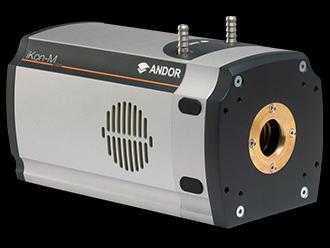
Andor’s iKon-M 934 series CCD cameras are ‘workhorse’ cameras for high-end in vivo imaging instruments, for luminescence and fluoresence. These cameras offer a 1024 x 1024 format and 13 μm pixel size, adjustable with on-sensor binning up to 16x16 for detection of extreme low light bioluminescence.
The backside illuminated sensor is available in visible optimized version (BV) offering 95% QE max, high dynamic range, and exceptionally low readout noise. The deep depletion ‘BEX2-DD’ sensor option provides an unmatched QE profile, offering the highest possible QE from UV through to NIR-I.
The iKon-M benefits from negligible dark current with industry-leading thermoelectric cooling down to -80°C (air) or -100°C (water).
Specifications Request Pricing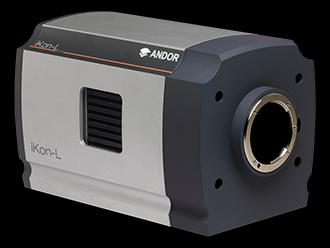
Andor’s iKon-L 936 CCD series cameras are the ultimate tools for high-throughput, high-end in vivo imaging instruments, for luminescence and fluorescence modalities.
Ideal for imaging multiple mice, these cameras offer large field of view and high resolution from 2048 x 2048 format coupled with 13.5 μm pixel size, which can be adjusted further with on-sensor binning up to 16x16 for detection of extreme low light bioluminescence.
The backside illuminated sensor is available in visible optimized version (BV) offering 95% QE max, high dynamic range, and exceptionally low dark current noise (0.000059 e-/p/s), maintaining minimal noise floor over the longest of exposure times. The Dual AR deep depletion ‘BEX2-DD’ sensor option provides an unmatched QE profile, offering the highest possible QE from UV through to NIR-I. The iKon-L offers thermoelectric cooling down to -80°C (air) or -100°C (water).
Specifications Request Pricing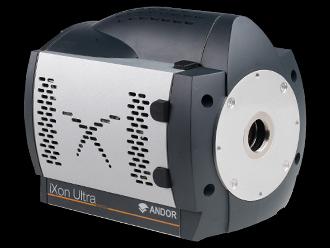
The Andor iXon Ultra EMCCD cameras are highly flexible and powerful tools for high-end in vivo imaging instrumentation.
These detectors offer both deep cooled conventional CCD readout for longer integration times, as well as the single photon sensitive Electron Multiplying mode, ideal for ultra-sensitivity with fast sensor readout. The vacuum sensor chamber also enables the cooling down to -100°C (water).
Both iXon Ultra 888 (1024 x 1024 pixels) and iXon Ultra 897 (512 x 512 pixels) variants are available, covering the wavelength range needed for both bioluminescence and standard fluorescence markers.
Specifications Request Pricing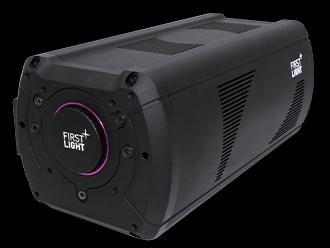
The Andor CB2 is an ultra-high performance scientific CMOS (sCMOS) camera platform, which combines high resolution with extremely low dark noise, ideal for cost-effective mid-range in vivo instruments.
Andor CB2-24B utilizes a back illuminated stacked CMOS sensor with 24.5 Megapixels resolution. The sensor has on-chip 2x2 binning, rendering flexibility for several applications with different resolution requirements, without impacting the low read of 1.3 e- RMS.
New generation sCMOS sensor technology combined with thermoelectric cooling delivers extremely low dark current (0.0015 e-/p/s) and no amplifier glow, rendering this camera perfect for both fast readout, high-resolution fluorescence as well as long exposure bioluminescence imaging, up to several minutes.
Specifications Request Pricing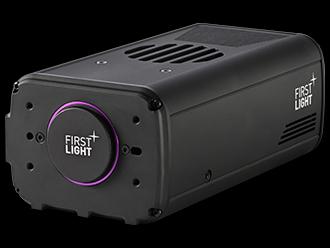
C-RED 2 is a market-leading deep cooled, low noise Short Wave Infrared (SWIR) camera. It integrates a 640 x 512 format InGaAs PIN Photodiode with 15 μm pixel pitch and 70% QE max.
C-RED 2 offers dark optimization for low light conditions with long exposure times up to 60 seconds, high Dynamic Range: 93 dB, and true 16 bits output. This makes it a perfect tool for in vivo fluorescence imaging in the NIR-II range, facilitating the development of next-generation fluorophores and in vivo instrumentation that is optimised for NIR-II imaging with tissue penetration that is an order of magnitude greater than visible in vivo imaging.
Specifications Request Pricing